In recent years, wireless connections have gained a lot of popularity and the credit goes to the developments in Bluetooth connectivity. Bluetooth is the simplest way of connecting two devices without a cable joining them.
Many devices can be connected to your computer using Bluetooth, namely keyboards, mouse and speakers. Apart from this, Bluetooth is also used to share data between two devices. Since most computers and almost all mobile phones these days have a Bluetooth feature, you can easily share files between the two.
If your computer lacks internal Bluetooth, you can purchase a Bluetooth adapter online and connect it to your system through a USB port. Bluetooth adapters are economical and buying one won’t burn a hole in your pocket. All you have to do is plug them into your system, download the required software/drivers and Windows 10 will recognize that your computer has Bluetooth connectivity.
In this article, we will see how to enable and use Bluetooth in Windows 10.
Turning On Bluetooth
You can turn on Bluetooth in Windows Settings as well as through the action center. The action center method is relatively simpler but you will have to access the Windows Settings anyway to add a new device.
From Windows Settings
You can easily enable Bluetooth via settings. To turn on Bluetooth, right-click on the Start Menu and select ‘Settings’ from the Quick Access Menu.

In Settings, select ‘Devices’, the second option.
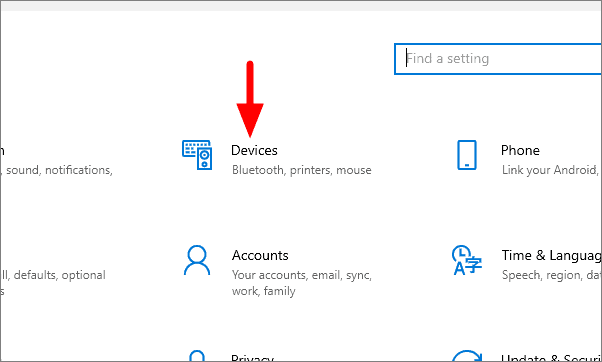
The ‘Bluetooth & other devices’ tab will open by default when you select Devices. Now, click on the toggle switch to turn on Bluetooth. Once the Bluetooth is on, the toggle will change from grey to blue, and ‘On’ will be mentioned right next to it.

Via Action Center
Action Center is located on the extreme right of the Taskbar. It has several shortcuts to turn on and off various features, Bluetooth is one of them.
To enable Bluetooth via Action Center, click on the extreme right icon on the taskbar which resembles the message sign.

In Action Center, click on the Bluetooth tile in the first row to turn it on. When Bluetooth is turned on, the color of the tile changes from light to dark.
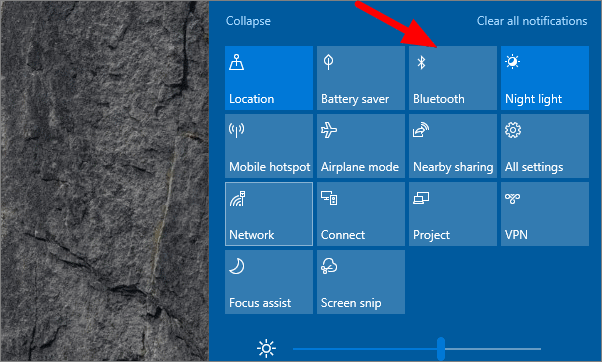
The Bluetooth has now been turned on, but it’s still of no use if we are unable to connect a device.
Pairing A Bluetooth Device
You need to pair a device before you can start using it. Enable the Bluetooth of the device you want to pair your computer with and ensure that it is discoverable (in pairing mode).
Open the ‘Bluetooth & other devices’ tab in Devices. Click on ‘Add Bluetooth or other device’ to pair a device.
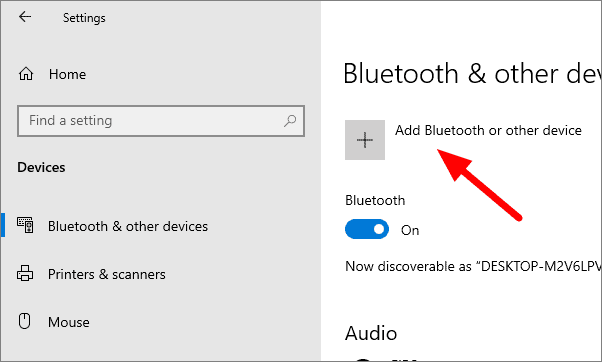
The ‘Add a device’ window will open. Select the type of device you want to add. The devices falling under each kind are given. Select the appropriate option to proceed.
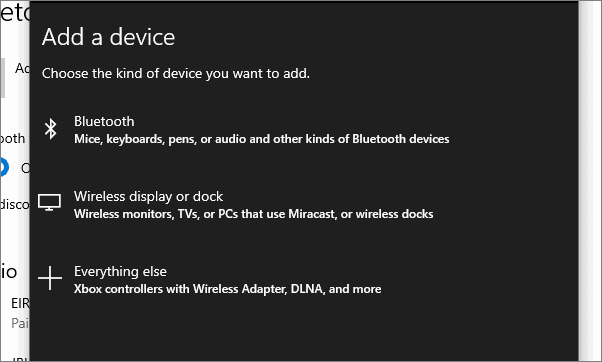
You will now see a list of available nearby Bluetooth devices falling under the category you chose on the last window.

Click on ‘Connect’ to pair the device. Also, if you are pairing with a mobile phone or a similar device, you will have to approve the pairing on that device as well. You have to check the PIN while pairing with some devices, while in the case of other devices, you will not have to verify the PIN, and just click on connect to pair.

Once a device is paired, it will be visible in the ‘Bluetooth & other devices’ tab under the relevant heading. Here we have two paired speakers, which are therefore visible under ‘Audio’.
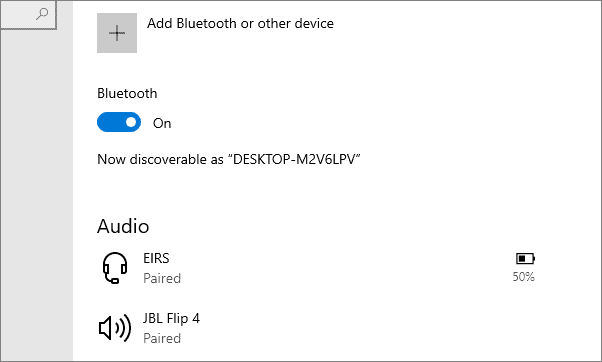
Sharing Files over Bluetooth
When Bluetooth was initially launched in mobile phones, it was used for sharing files and images. Now we can do a lot more with Bluetooth connectivity, but sharing files is still one of the most utilized features. Before we start sharing files over Bluetooth, ensure that the Bluetooth on both the devices is turned on and that the device receiving the file is discoverable.
To share files over Bluetooth, select ‘Send or receive files via Bluetooth’ in the Bluetooth & other devices tab.

The ‘Bluetooth File Transfer’ window will open. If you want to share a file, select the first option or select the second one if you want to receive a file.

Select the device you want to share data with and then click on ‘Next’.

Browse your system and select the file you want to share. After you have selected the file, click on ‘Next’ at the bottom.

You will see the status of file transfer on the next page until it is complete. Follow the steps to complete the file sharing and then close the Bluetooth File Transfer window.
Troubleshooting Bluetooth Connection Issue
We have already discussed how to turn on, pair, and share files over Bluetooth. Sometimes the Bluetooth feature does not work as expected and we might face trouble in connecting to a device or sharing files over it. Therefore we must understand the basic troubleshooting methods to fix any issues with the Bluetooth.
Check Bluetooth Status
If you are facing issues connecting to a device, ensure that the Bluetooth on both the devices is enabled and that the devices are visible/discoverable. Many a time, we turn on the Bluetooth but forget to make the device discoverable, thus preventing us from connecting to the device.
If the device is not discoverable, you can connect to it if it is already paired but will not be able to pair it to a new device. To fix the issue, make both the devices visible and see if the issue is resolved.
Reboot the Computer
Rebooting your computer when facing issues with Bluetooth connectivity can help resolve the problem. When you reboot the computer, the computer executes the boot process, and the operating system is reloaded which can eliminate multiple errors.
Reboot your system and see if the issue is resolved. In case it is not, proceed to the next step.
Restart Bluetooth
Disable the Bluetooth and then enable it after a couple of seconds. This will help resolve many issues and is probably the easiest troubleshooting technique.
To turn off Bluetooth, go to the Action Center and click on the Bluetooth tile to turn it off. Again click on it to turn it on. When the Bluetooth is turned off, the color of the tile gets lighter while it becomes darker when it is enabled.

Change Position or Device
If there is a lot of obstruction between the two devices to be connected, you may face trouble connecting them. Move the devices closer to each other with no obstruction between them and see if the issue is resolved.
In case, you are still unable to connect to a particular device, try connecting to another one. If you can connect to the second device, there is a problem with the device you were initially trying to connect to. If you are unable to connect, then there is a problem with the computer, which needs to be fixed before you can start using Bluetooth again.
Re-pair Device
If the Bluetooth connectivity issue is still present, try removing the device and then pairing it again. Sometimes, there is a problem with the pairing, as a result, you are unable to connect to the device.
To remove a device, go to the ‘Bluetooth & other devices’ tab and click on the device name you want to remove. Now click on ‘Remove device’ and the device will be unpaired.

To re-pair with the device, follow the steps mentioned above under the subheading ‘Pairing a Bluetooth Device’.
Run Troubleshooter
The troubleshooter can easily identify the issue causing problems with the Bluetooth connection and help you eliminate those. When you run Windows troubleshooter, you will only be asked to make changes that do not affect the health of your computer.
To run troubleshooter, open Settings and select ‘Update & Security’, the last option.

In Update & Security, click on the ‘Troubleshoot’ tab to access it.
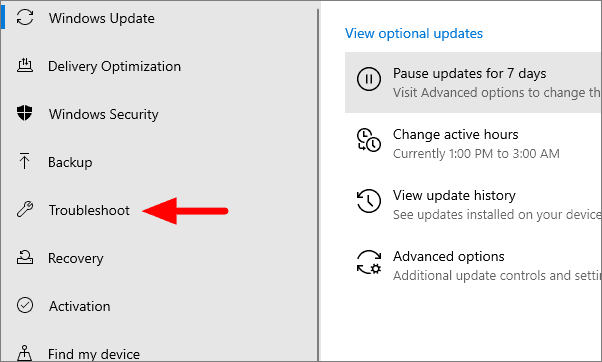
If the troubleshooter options are not displayed on this window, click on ‘Additional troubleshooter’.
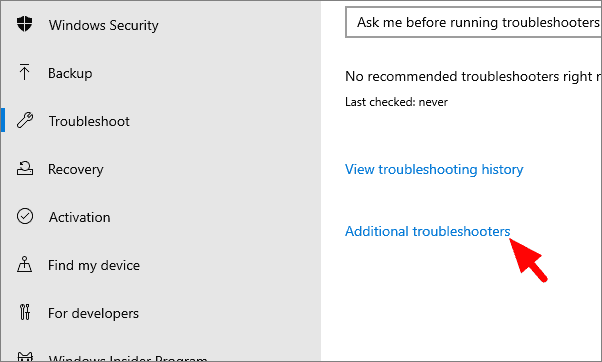
In Additional troubleshooter, select ‘Bluetooth’ and then click on ‘Run the troubleshooter’ just underneath it.
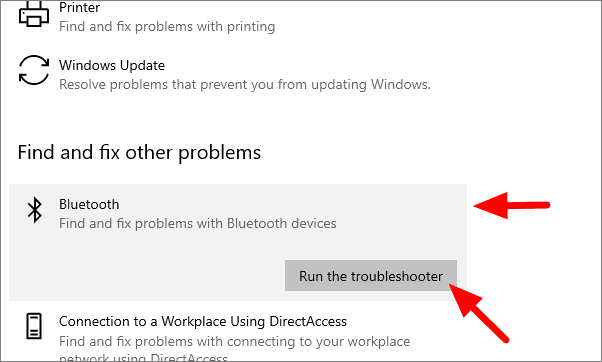
Windows will troubleshoot the issue and make the necessary changes required to fix the issue. Some changes in settings require the user’s approval, therefore follow the steps on the troubleshooter window to resolve the issue with the Bluetooth connection.
Update Bluetooth Drivers
Windows automatically download and install the drivers for any connected device. The same applies to Bluetooth. The manufactures release updates for the drivers and most of the time, Windows updates them on their own without any interference from the user’s end. There are times when Windows does not update the driver, which could lead to issues with Bluetooth.
To update Bluetooth drivers, search for ‘Device Manager’ in the search menu and open it.

Search for Bluetooth, and from the list, right-click on the Bluetooth device you are facing issues with, and then click on ‘Update driver’ from the context menu.

It is recommended that you allow Windows to search for the driver, therefore select the first option.
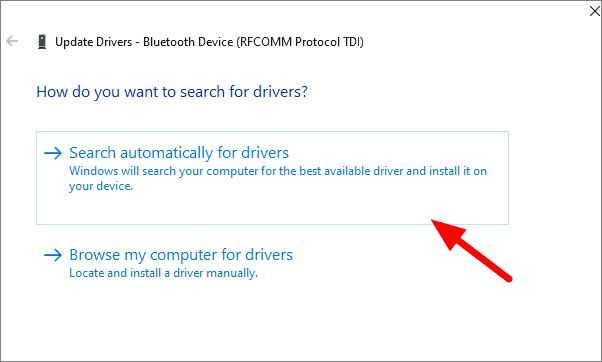
Windows will now search for any available updates. In case it is available, download and install them to resolve the issue with Bluetooth connections.
Now that we have discussed almost everything about using Bluetooth on your computer and troubleshooting, you shouldn’t face any problems.

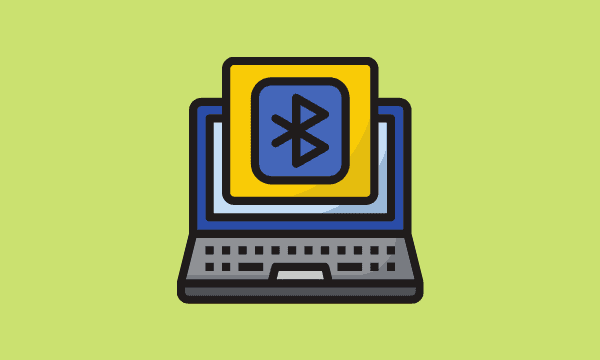








Member discussion